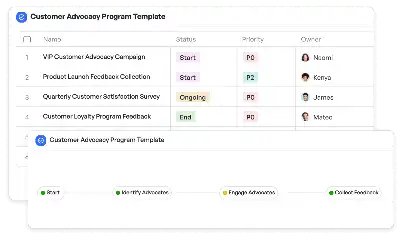Perception Stack Performance Metrics
Achieve project success with the Perception Stack Performance Metrics today!

What is Perception Stack Performance Metrics?
Perception Stack Performance Metrics are essential tools for evaluating and optimizing the performance of systems that rely on sensory data and algorithms. These metrics are particularly significant in industries such as autonomous vehicles, robotics, and AI-driven surveillance, where accurate perception is critical for operational success. By analyzing sensor data, calibration processes, and algorithmic outputs, these metrics provide a comprehensive understanding of system efficiency and reliability. For example, in autonomous driving, perception stack metrics help ensure that vehicles can accurately detect obstacles, interpret road signs, and navigate complex environments. The importance of these metrics lies in their ability to identify bottlenecks and areas for improvement, enabling teams to refine their systems for better performance and safety.
Try this template now
Who is this Perception Stack Performance Metrics Template for?
This template is designed for professionals and teams working in fields that require advanced sensory and algorithmic systems. Typical users include engineers in autonomous vehicle development, robotics specialists, AI researchers, and industrial automation experts. For instance, a robotics engineer might use this template to evaluate the vision system of a robot, ensuring it can accurately identify objects and navigate spaces. Similarly, AI researchers developing surveillance systems can leverage these metrics to optimize detection algorithms and improve system reliability. The template is also valuable for project managers overseeing complex technical projects, providing them with a structured approach to monitor and enhance system performance.

Try this template now
Why use this Perception Stack Performance Metrics?
The Perception Stack Performance Metrics template addresses specific challenges faced in sensory and algorithmic systems. For example, in autonomous vehicles, one major pain point is ensuring sensors can operate effectively in diverse environmental conditions, such as rain or fog. This template provides tools to evaluate sensor calibration and performance under varying conditions, helping teams identify and resolve issues. Another challenge is optimizing algorithms for real-time decision-making, such as obstacle avoidance or path planning. The template includes metrics to assess algorithm efficiency and accuracy, enabling teams to refine their systems for better outcomes. By focusing on these unique challenges, the template ensures that users can achieve high levels of system reliability and performance.

Try this template now
Get Started with the Perception Stack Performance Metrics
Follow these simple steps to get started with Meegle templates:
1. Click 'Get this Free Template Now' to sign up for Meegle.
2. After signing up, you will be redirected to the Perception Stack Performance Metrics. Click 'Use this Template' to create a version of this template in your workspace.
3. Customize the workflow and fields of the template to suit your specific needs.
4. Start using the template and experience the full potential of Meegle!
Try this template now
Free forever for teams up to 20!
The world’s #1 visualized project management tool
Powered by the next gen visual workflow engine




